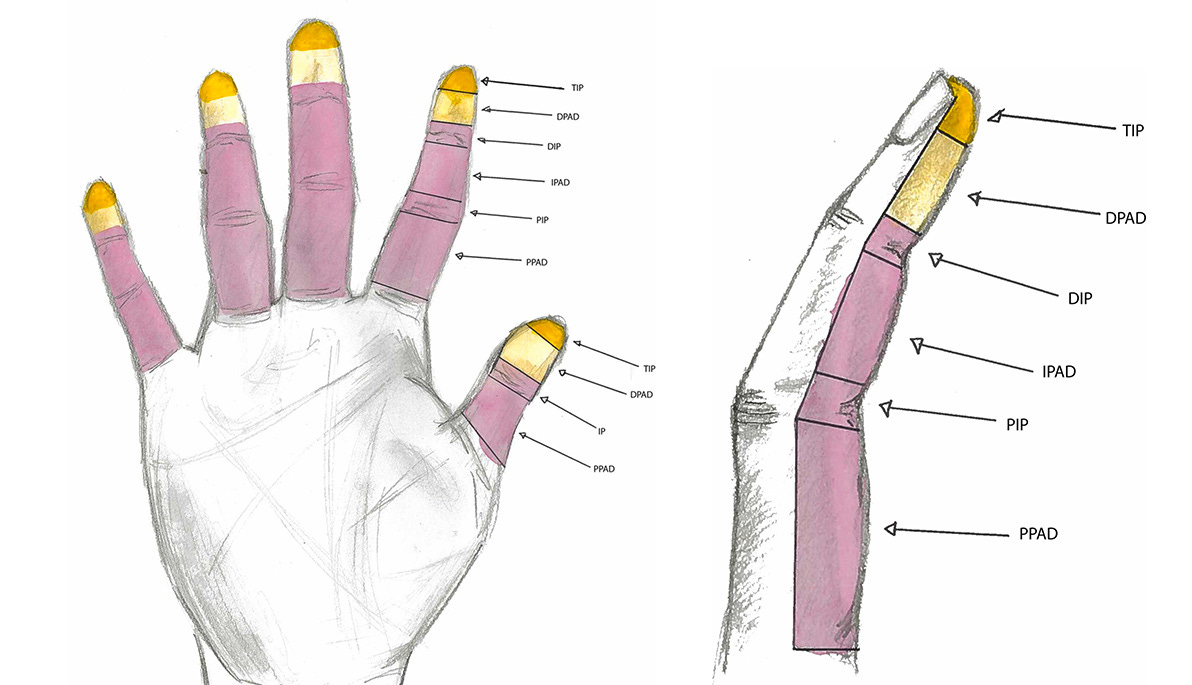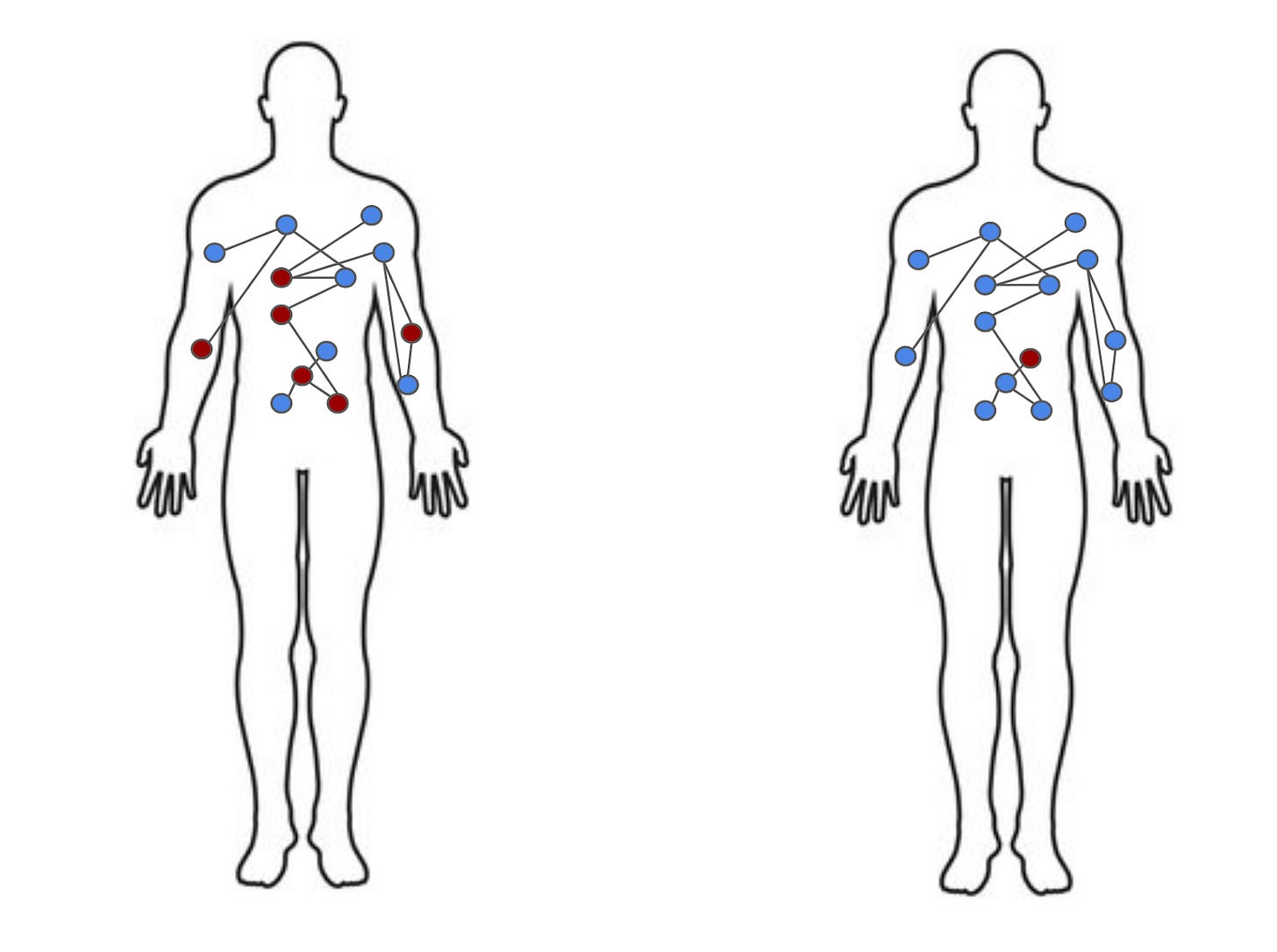Sensorimotor Awareness and Pain
Who By Very Slow Decay (of Sensorimotor Learning)

In the tip of your index finger, there are about a hundred touch receptors. There are over a hundred million across your whole body. The mind intelligently compresses this information when it is not used or when it is overwhelming, as in a response to some traumatic incident.
Imagine each touch receptor as a node in a network. Sensing and movement are deeply intertwined, so we call this the sensorimotor network. We can roughly say that each node can either be ‘online’ (e.g. those in the tips of your fingers as you hold your device right now) or ‘offline’ (e.g. those on the arch of your feet if you wear boots all the time).
If you carefully watch a young child breathe, you’ll notice that most of them breathe with more of their bodies. Their stomach rises and falls — their whole body seems to be involved in the breath. Now, if you watch a sedentary older man breathe, it looks like great struggle, and only the chest moves1.
One way of understanding this is far more of the child’s sensorimotor nodes are online. They can sense (and thus use) how the right side of their lower chest moves in response with the diaphragm, and automatically adjust it as they change positions from standing to sitting to lying down. The child’s breath is always gentle and easy. I think something similar is going on with skilled dancers — they are able to sense themselves and use their bodies in ways most of us have lost access to (even with the same build and strength).
Consider how you sit right now. You might feel distinctly your lower back, mid back, and upper back. This sensing lets you make micro-adjustments, feeling roughly which vertebra might be out of alignment or which specific muscles are working too hard.
What happens if many of these sensorimotor nodes go offline?
Imagine sensing your whole back as a single undifferentiated blob of muscle/skeleton that can either be tensing (stiffening upright) or relaxing (slouching).
For one, you would sense discomfort after your muscles were already tired. In general you would have a much higher threshold before becoming aware of low level uncomfortable sensation (whether your muscles are tired, being strained in an uncomfortable position etc).
Also, you would be exerting much more effort than is necessary. If there are only two modes for your back muscles (“maximal constriction” or “no constriction”), they will be in a state of chronic tension.
There is much more to say about this, but if this model is right, improving sensorimotor clarity can greatly relieve pain and the sensation of tension. This is basically the principle that somatic modalities like Alexander Technique and the Feldenkrais Method are based on.
I couldn’t easily find video demonstrations of this, but have personally observed it. If anyone finds a good video describing this, I would love to see it.



